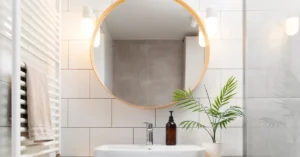Curtain Wall Design in SketchUp can be a fascinating and rewarding process, allowing you to create stunning facades for your architectural projects. Whether you prefer a manual approach or the convenience of plugins, this guide will help you master the art of curtain wall design.

Curtain Wall Design in SketchUp: Manual Design
Designing curtain walls manually in SketchUp requires a good grasp of the software’s basic tools and functions. Follow these steps to get started:
- Setting up Your Workspace:
Open SketchUp and choose a template that suits your project’s scale. Make sure you’re familiar with the navigation tools, including the orbit, pan, and zoom functions. - Draw the Building Structure:
Start by drawing the basic structure of your building using lines and rectangles. Ensure that the base is square and accurately represents the building’s footprint. - Create Grids:
Curtain walls often feature a grid structure for the placement of glass panels. Use the “Line” tool to draw grids on the building’s facade. Ensure that the grids are evenly spaced and aligned. - Designing Mullions and Transoms:
For added realism, create mullions and transoms within your grid. These horizontal and vertical members provide structural support to the curtain wall. Use the “Rectangle” and “Line” tools to draw them. - Adding Glass Panels:
SketchUp allows you to apply different materials to your grid structure. Apply a glass material to the grids, and you’ll have a realistic curtain wall in place. - Fine-Tuning and Details:
To enhance the design, consider adding details like handles, shading devices, or any other architectural elements specific to your project. These details can be created using various SketchUp tools. - Rendering:
Rendering your curtain wall will provide a more realistic view. You can use SketchUp’s built-in rendering capabilities or export your model to a dedicated rendering software for more advanced results.
Curtain Wall Design in SketchUp: Using Plugins
If you’re looking to streamline the design process and add more complexity to your curtain wall, consider using SketchUp plugins. One of the most popular plugins for this purpose is “Curtain Wall Designer.”
- Installing the Plugin:
Search for and install the “Curtain Wall Designer” plugin from the SketchUp Extension Warehouse. Follow the installation instructions provided. - Creating a Curtain Wall:
Open your SketchUp project and navigate to the plugin’s interface. Select the desired curtain wall type and customize its parameters, such as grid spacing, mullions, and transoms. - Adding Glazing:
The plugin makes it easy to add glazing to your curtain wall. You can choose from various glass types and specify their properties, like transparency and reflectivity. - Customization:
The plugin offers advanced customization options, allowing you to tweak every aspect of your curtain wall’s design. You can even import custom profiles for mullions and transoms. - Realistic Visualization:
Plugins like “Curtain Wall Designer” often come with built-in rendering tools. You can visualize your design with realistic materials and lighting directly within SketchUp. - Export and Integration:
Once you’re satisfied with your curtain wall design, you can easily export it for use in other software or incorporate it into your SketchUp project.
Conclusion
In conclusion, SketchUp provides both manual and plugin-based approaches to design curtain walls. The choice between the two methods depends on your familiarity with the software and the complexity of your project. Whether you opt for manual design or use plugins, SketchUp’s versatility makes it a powerful tool for creating impressive curtain wall facades for your architectural endeavors.
